Succulents will without a doubt add some beauty to your garden. They add flair and color, shapes and smells, they simply make it a better place. Humans are not the only ones drawn by the succulents’ vibrant colors and unusual features however. Dogs may also want to check them out!
Unfortunately, not all succulents are safe for dogs. Some succulent species are poisonous or even lethal for dogs. And while animals are typically smart with their instincts and won’t eat something that will make them sick, domestic animals do not always share the abilities of their wild counterparts, especially if they aren’t fed a proper diet. That’s why I believe it is better to be safe than sorry, and simply avoid poisonous succulents for dogs. Let’s have a look at some of the most common.
Table of Contents
1. Aloe Vera and/or True Aloe
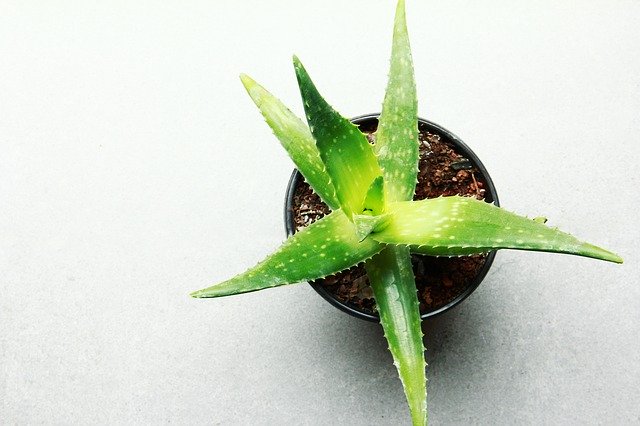
Aloe Vera has dominated the beauty/skincare world for the past few years because of its benefits to the skin. That’s why a lot of people opted to plant it in their garden. But this succulent has properties that are harmful to dogs, the anthraquinones and saponins.
When dogs ingest aloe vera, it can cause abdominal pain, lethargy, nausea, tremors, vomiting, and skin irritation. What’s more, glycosides, anthraquinones, and anthracene are found in true aloe which makes the dog to vomit and change the color of their urine into red.
2. Snake Plant (Sansevieria Trifasciata)

Snake plant is another famous succulent variety. This plant could thrive even when neglected. It could also grow in low-light making it a suitable plant for growing indoors. Snake plant is also known as Mother-in-Law plant.
Behind all its beauty, however lies the hidden danger for the dogs. This succulent contains saponin a substance that if ingested by a dog, it could cause vomiting, nausea, and diarrhea.
* Special tip: Are you into a plant based diet? Why not trying this great plant-based dog food you can get on Amazon for your dog as well, so it can also enjoy the benefits, and does not need to take a bite of your succulent plants :).
3. Euphorbias
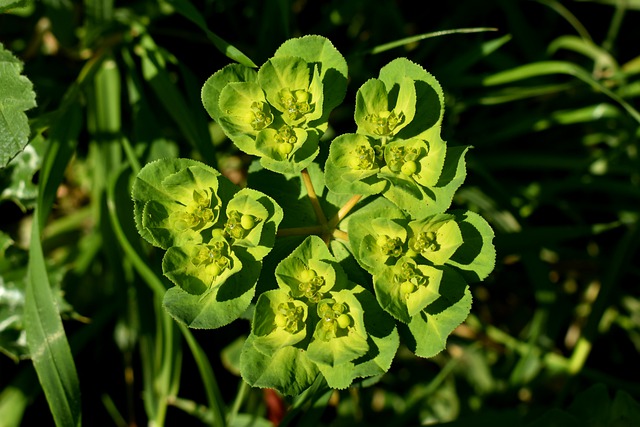
Euphorbias are considered as one of the most unusual and weird-looking succulents. In my personal experience, however, they aren’t difficult to grow. b
They produce latex in their leaves, a white milky sap, which is irritating to humans and dogs. The white sap causes rashes and if ingested by dogs could lead to vomiting and irritation of the mouth and the stomach. Your dog likely won’t die if it eats euphorbias, and for sure it will remember the lesson for the next time, and will avoid the plant. If you want to spare it this unpleasant experience, however, make sure it cannot reach the plant.
4. Kalanchoes
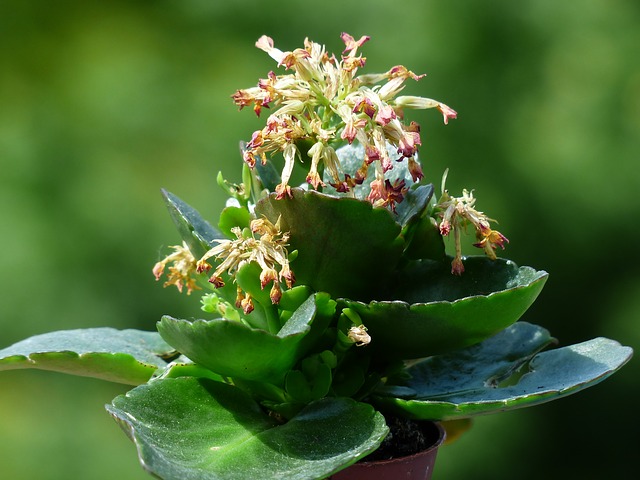
Kalanchoes are pretty popular succulents because of their capability to grow fast and bloom in almost any conditions. They are also common plants, and you can easily find them walking outside, just looking at the gardens. Their color ranges from magenta, pink, red, yellow, up to orange, and it is the variety that makes it a favorite among gardeners.
But these plants are not safe for dogs. One of its downsides is it’s content cardiac glycosides which are pretty harmful to dogs. It causes abdominal pain, lethargy, salivation increase, diarrhea, and may even cause vomiting. If large amount is ingested by a dog, it could be fatal. It will cause elevated heart rate, irregular heartbeats, severe weakness, and labored breathing.
5. Crassula Ovata (Jade Plant)
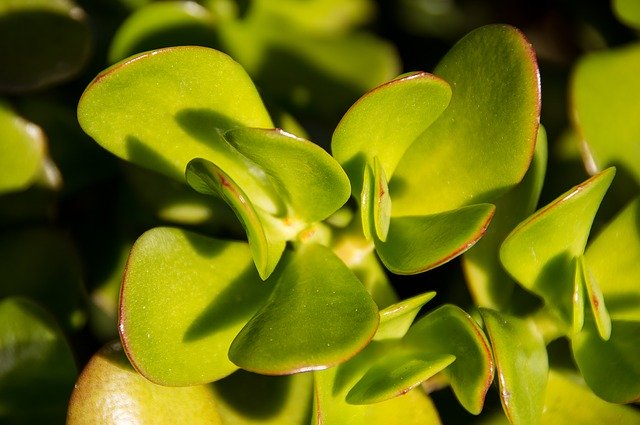
Crassula Ovata is a type of succulent that has smooth, shiny, thick, and fleshy leaves. These leaves would grow in opposite pairs. While it is still unknown why this succulent is poisonous to dogs, if ingested it causes coordination problems, vomiting, lethargy, and even depression.
Sure enough some mysteries of the nature won’t ever be resolved. There’s something about Jade Plant that makes the dogs lethargic and even depressed, but nobody knows what exactly it is. In any case, if you wanted to add a few leaves of your Jade Plant to your dog’s meal for some variety, think twice if this is what you should do.
6. Senecio Rowleyanus (String of Pearls, String of Peas Plant)
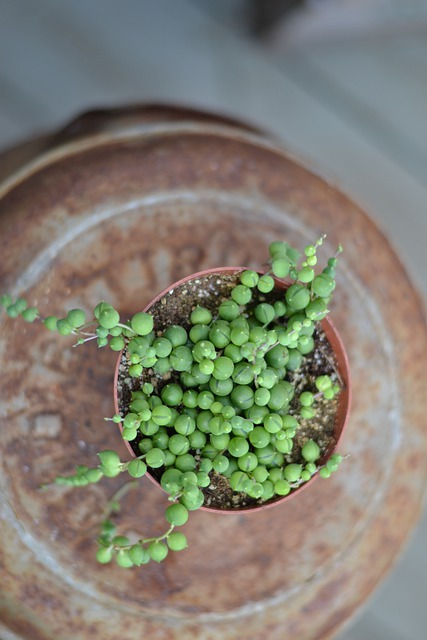
Senecio Rowleyanus has beautiful features, and is one of a kind succulent in my view. The stems of this succulent are covered with round little pea-like leaves. Another thing why most gardeners love to have this succulent in their garden is it produces white and fuzzy flowers that have a cinnamon and vanilla scent in it. It feels almost like a miracle for true plant lovers.
Dogs can mistake this plant for food because of its scent. Unfortunately, when ingested may result in drooling, diarrhea, vomiting, and lethargy. The sap can cause skin irritation and dermatitis to humans and dogs. Hence it is better placing this succulent on a window or somewhere your dog cannot reach it.
7. Sago Palm (Cycas Revoluta)
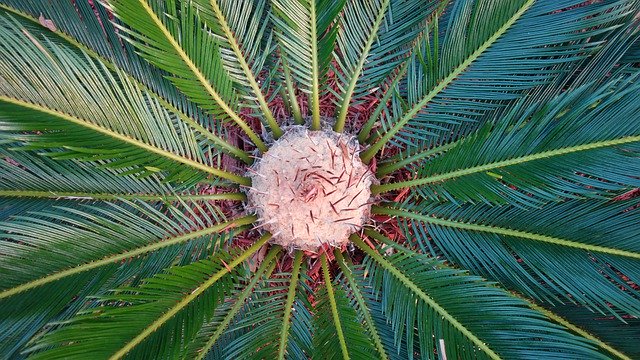 Most people have mistaken sago palm as a palm tree because of its features. But it is actually a succulent. Gardeners love it since it is hardy and can sustain extended periods of drought.
Most people have mistaken sago palm as a palm tree because of its features. But it is actually a succulent. Gardeners love it since it is hardy and can sustain extended periods of drought.
However, sago palms contain the substance called cycasin. When dogs ingest it, it will attack their liver. Cycasin poisoning causes the dogs to vomit, an increase in thirst, and liver failure. These symptoms may occur in the duration of 15 minutes up to a few hours after ingestion. As a rule of a thumb, dogs won’t be attracted to this succulent, and won’t eat it. As they say though you can never be 100% sure, unless you simply decide to not plant it in the space where your dog lives.
9. Panda Plant (Philodendron Bipennfolium)
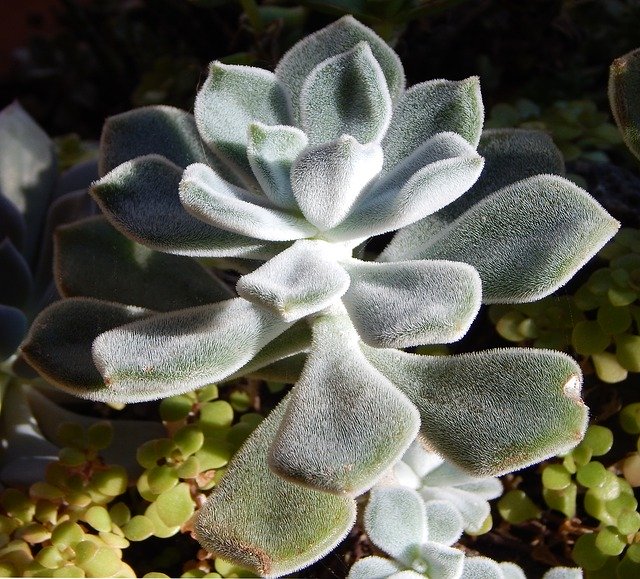
Panda plant is also commonly known as fiddle leaf. This succulent is one of the most common houseplants out there because it only requires easy and little care. This is makes it a good starter plant for beginner gardeners.
However, its leaves contain a type of crystal called insoluble calcium oxalates which can be pretty irritating to the tissues. If ingested by dogs, they would have a hard time swallowing, mouth irritation, and vomiting. In my experience though, dogs do not find this plant attractive at all. They may piss at it to mark their territory, but that’s about it.
10. Kalanchoe Delagoensis (Mother of Millions)
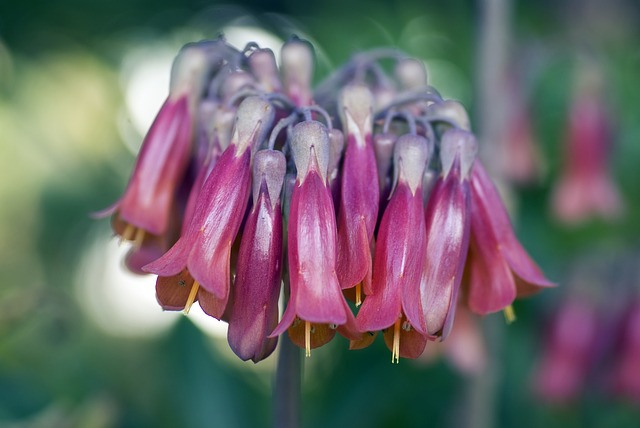
This succulent is also known as Bryophyllum Delagoensis. It is famous for its capability to grow fast, multiply anywhere, and resist drought. Hence the name Mother of Millions. One of its amazing features are the seeds which are capable to survive for years, even when they are pulled out. Once they find favorable conditions, they will simply sprout and a new plant can grow there…
However, Kalanchoe Delagoensis contain a substance called bufadienolide cardiac glycosides. If dogs ingest it in a large amount they would suffer from diarrhea, abnormal heart rhythm, vomiting, and irritation of gastrointestinal tract. In worst cases it can actually lead to death.
Make sure to check for each individual succulent whether it is safe for your dog
Two other popular succulents I’d like to mention here are Crassula Arborescens (Silver Jade Plant) and Kalanchoe Daigremontiana (Mother of Thousands). The first one is known for their silver dollar features leaves. Its leaves are round and the color of the leaves are silvery-green with reddish edges on it. Up to this day, the toxic substance this succulent includes is still unknown. When dogs ingest it, however, they will suffer from nausea and vomit. So there’s definitely something in there which they do not like.
Kalanchoe Daigremontiana on the other hand has a toxic steroid called daigremontianin which causes the dogs to vomit, collapse, have diarrhea, and to some extent abnormal heart rate, tremors, and seizures. Better to keep it out of their reach I would say…
To sum it up, once you have pets at home especially dogs, it is very important to determine the toxicity level of the plants before you purchase them for your garden. Fortunately, many succulent varieties are safe for dogs. Below is the list of pet-friendly or not toxic succulents. You can easily add these succulents to your garden, with no worries of your dog coming to harm.
- Opunta Species
- Aeonium Kiwi
- Sempervivum (Hens and Chickens)
- Burro’s Tail
- Hard Baby Tears
- Painted Lady (Copper Rose, Maroon Plush Plant)
- Haworthia
- Wax Rosette
- Plush Plant
- Christmas Cactus
- Ghost Plant
- Maroon Chenille Plant
- Tree Cactus
- Mexican Snowballs
- Mexican Firecrackers
- Aeonium Arboreum Zwartkop (Black Rose)
- Sedum Morganianum (Donkey’s Tail, Burro’s Tail, Lamb’s Tail)
- Beaucarnea Recurvata (Ponytail Palm Tree)
- Mesembryanthemaceae (Lithops)
- Gasteria
Final thoughts
Though dogs are smart animals and they normally won’t eat something that could cause they harm, incidents of dogs eating poisonous plants (and even dying as a consequence) are not unheard of.
For the peace of mind it is simply better planting succulents that are safe for dogs. Luckily enough, the family of succulents is big, and you have always many choices, even when you decide to limit yourself only to plants that are 100% safe to your pets. I hope you will find such, and wish you happy growing!
